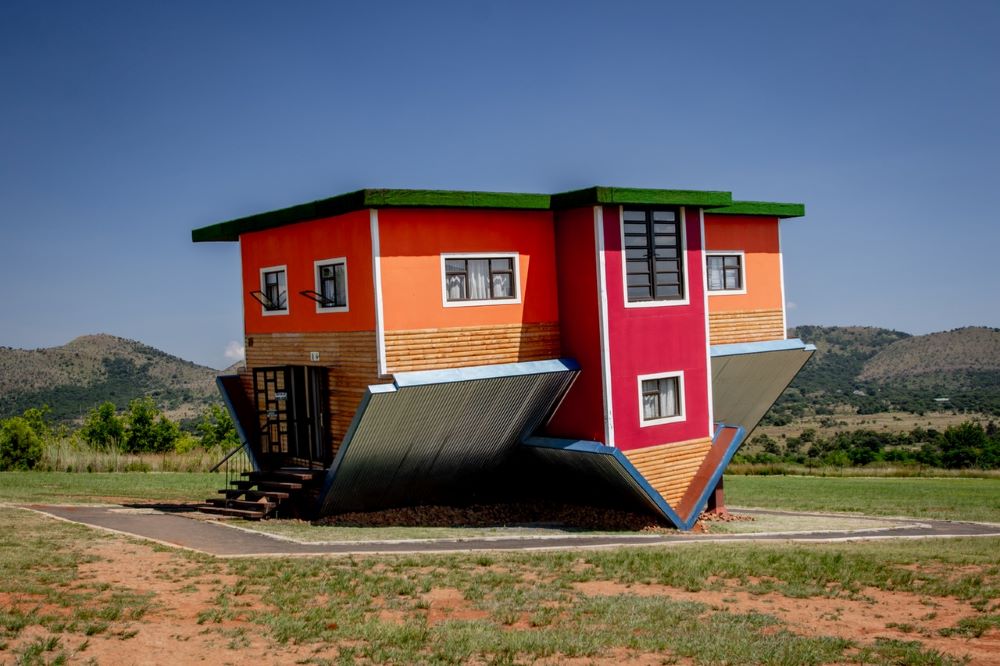“Getting back to normal” has been the refrain for the past ten months. In the early months of the pandemic, we thought we just had to hold on until “normal” returned in the summer. As fall approached, “normal” got pushed to early 2021.
And now, here we are. The virus is stronger than ever. Our old conception of “normal” looks unlikely for a long time, if ever. Like it or not, this life right now has become the normal we have to work with. It’s magical thinking to pretend otherwise.
Why we’re obsessed with getting back to normal
It’s natural to pine for the good old days, our old normal. At work, “normal” meant reliable streams of revenue, a predictable budget and calendar, and dependable routines. At home, it meant socializing, hugging, carefree shopping, dining out, walking down busy streets, and a fairly predictable household schedule.
Our brains strive for normal. It’s a survival instinct. Uncertainty and unpredictability bring a risk of danger. Amidst all the disruption caused by the pandemic, we seek the comfort and stability of normal routines and traditions. We want to return to the practices that have proven to work in the past.
But the past is gone. We aren’t going back to normal. A tough pill to swallow but the sooner you get it down and accept it, the better you and your association will thrive now and in the future.

Why it’s not constructive to pine for the past
“Normal” isn’t arriving as originally planned. When and if it does arrive, it won’t resemble the normal of a year ago.
Everyone kept saying, once the vaccine arrives, we’ll be okay, things will get back to normal. Now, the vaccines are rolling out (slowly) but there’s still no certainty about when most people will have access to them. Unless your members are elderly, healthcare workers, first responders or frontline workers, they’re in for a long wait.
Questions remain. What percentage of people will get the vaccine? When will herd immunity be achieved? When will the virus fade away and become a non-issue?
Here’s the reality: we won’t return to normal. We’re not returning to how it was. The pandemic has rewired everyone’s behavior. Habits have changed.
Your members and customers have been exposed to virtual everything. The digital transformation has accelerated beyond anyone’s predictions. Expectations have changed too. You can’t just take away what you provided during the pandemic, like virtual conferences and networking meetups.
Also, your association’s “normal” wasn’t that great for everyone. It was mediocre at best for people who couldn’t attend your in-person events, people who didn’t feel heard or seen, and people who felt shut out of volunteer and leadership opportunities.
Lowell Aplebaum, CAE, recently said, “Many norms which were calcified in associations’ systems simply because of inertia have become dislodged.” That’s a good thing. What you did in the past was often accepted without thinking because you always did it that way. It seemed to work, but was it the best way to achieve your goals and your members’ goals?
Choose to respond differently
You don’t have control over what’s going on around us, but you can control how you respond. Never forget that. Choose to see things differently. Don’t see the present and the future through the lens of the past. See the silver linings and opportunities. Choose to adopt a different mindset.
Release your attachment to the past, to what was considered normal. The sooner you (and your association) do this, the better positioned you’ll be to take advantage of this crisis and the new opportunities it’s revealing—and will continue to reveal.
Mark Schaefer’s business was based on in-person keynotes and marketing consultation. He forced himself to undergo a mental transition from “just hold on until we’re back to normal” to “there won’t be any back to normal.”
He said this shift in his mindset was a result of achieving acceptance—the final stage in the grieving process, per psychiatrist Elisabeth Kübler-Ross. In case you’re wondering, the other stages are denial, anger, bargaining and depression. Which one are you in? What about your association?

Permission to grieve—and then to accept and find meaning
We’re all grieving. We’re grieving what we’ve lost—perhaps for you, it's freedom, fun, stability, money, or peace of mind. In a popular Harvard Business Review article, David Kessler said we are also experiencing the anticipatory grief of losing even more because of the uncertainty of this situation. He counsels us to move to the acceptance stage of grief and then beyond to his sixth stage: find meaning in the cause of your grief.
The last ten months have shown, people and organizations are capable of doing things they hadn’t ever imagined. What once seemed impractical or impossible now seems fairly normal. You’ve, hopefully, delivered value to your members and customers in new ways. If not, you can accept and work within these conditions and figure out how to provide value to them in a virtual way—that’s a meaningful result of this pandemic.
Cultivate a new mindset for the new dynamic
The world around us will continue to be volatile. It will change in unexpected (and, perhaps, unwanted) ways. The pace of change will likely accelerate. The best strategy for your and your association’s wellbeing is to be agile, open to change, and willing to unlearn what you know by listening and learning new things.
Give yourself grace and permission to feel twitchy. Change isn’t easy so have reasonable expectations about how you, your colleagues and your volunteer leaders will handle change.
Start reciting this mantra from startup founder Alistair Croll: “Instead of wanting the past back, want the future sooner.” Who needs to hear this, besides yourself? Your colleagues? Your boss? Your volunteer leaders?
Croll said: “If you want to survive in this transition, you need to take the part of yourself that craves the past, that treasures it, that mourns what’s lost; you need to bundle it up gently; and you need to set it carefully aside. And then replace it with a desire for the future. Get excited about what tomorrow might hold.”
Think about what your association might create, instead of mourning what you have lost. Lowell Aplebaum asked, “Who on your staff will become the designer of virtual member-to-member connection? How will you innovate your approach to combat Zoom fatigue and find ways to surprise and delight members in your networking and programming?”
Take what you’ve already created during this crisis and build on it. Aplebaum said, “A program, product, or service created in crisis response should not become a new norm. Take the time to step back, reflect, refine, improve.”
Everyone keeps talking about a new normal or next normal, but nothing is going to stay the same long enough to become normal. We’re in constant flux. It’s better to adopt another phrase I’ve seen lately, “a new dynamic.”
Let’s live in the here and now, instead of pining for a pre-pandemic past. Sure, it’s different, a little bit scary, but it provides a perhaps once-in-a-lifetime opportunity to experiment with new ideas—ideas that could turn into programs that position you, your association and your members for future success.






